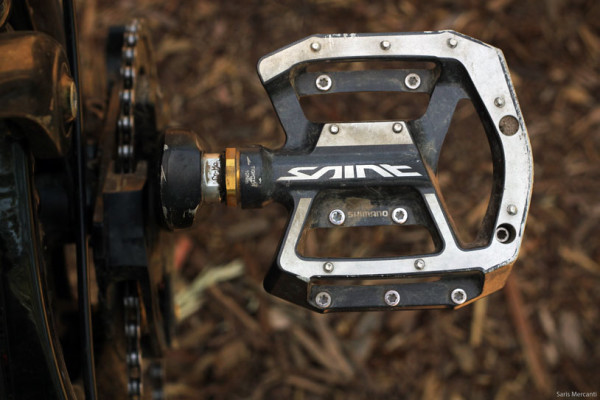Amongst horse enthusiasts, a breeds inclusion into the sport or working categories may be a subject of heated debate, but there is no question to which group the Shimano Saint Pedal belongs.
Built with long term reliability in mind, and priced reasonably, the Shimano Saint pedals are a serious work horse.
 You can view all our scale shots of the Saint group here.
You can view all our scale shots of the Saint group here.
Weighing in at just a few paperclips less than the claimed 500 g, the Shimano pedals are in a weight class that is nearly a quarter pound heavier than similarly priced competitors.
That will undoubtedly scare away the weight weenies, but is sure to attract another type predator – the kind who hungers for reliability.
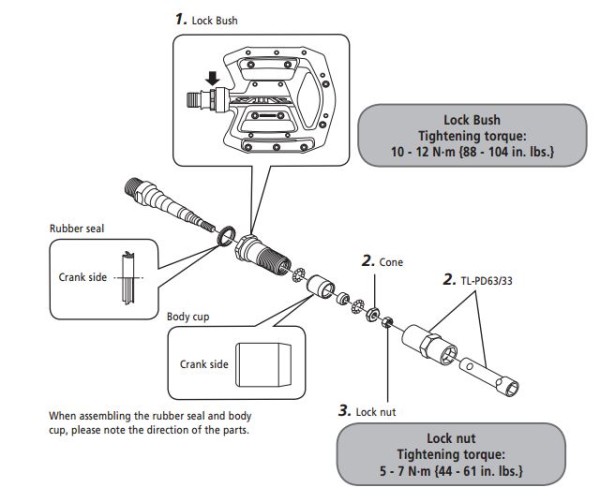 Full rebuild instructions can be found on the Shimano Dealer’s Manual Website
Full rebuild instructions can be found on the Shimano Dealer’s Manual Website
Unlike today’s crop of thoroughbred models, you won’t find an igus bushing inside, or anything that will need a rebuilt after a season or two. Instead, the Saints rotates on a cromoly axle, that spins on ultra reliable cup and cone bearings.
It’s the same axle system used on all of their pedals, which makes replacement parts cheap. The rebuild process is also fairly simple and be done with just a few basic tools.
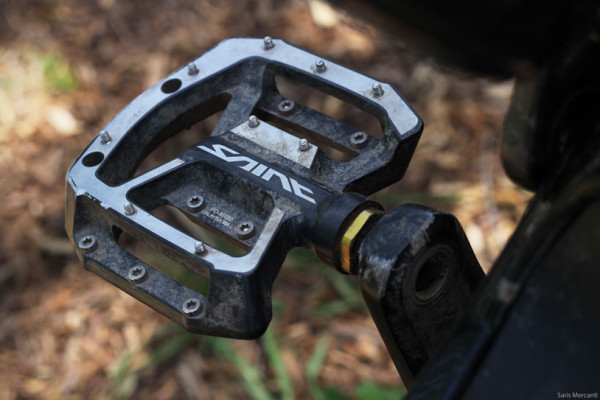 The platform face has little concavity and relies on 9 pins per side for traction. All the pins are installed from the back of the pedal, and utilize torx heads to reduce the chance of stripping.
The platform face has little concavity and relies on 9 pins per side for traction. All the pins are installed from the back of the pedal, and utilize torx heads to reduce the chance of stripping.
Top to bottom: Stock pedal with washers installed under pin heads, stock pin height after the washers have been removed
The pedals come stock with the pins installed, but by default are shipped with spacers under the pin heads. This unique twist gives end user the ability to tweak overall grip.
Shimano also includes an extra set of spacers, and an extra set of longer pins, so you can further dial in traction.
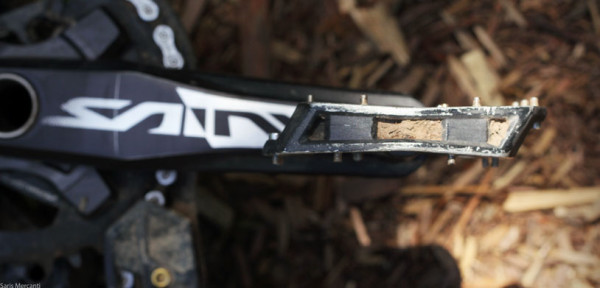 The pedals shed mud well, but these small gaps on the outside edges of the pedal tend to stay filled.
The pedals shed mud well, but these small gaps on the outside edges of the pedal tend to stay filled.
As a pair, the black and silver color scheme (with the light gold accents) shared by the Saint crank and pedal look fantastic. 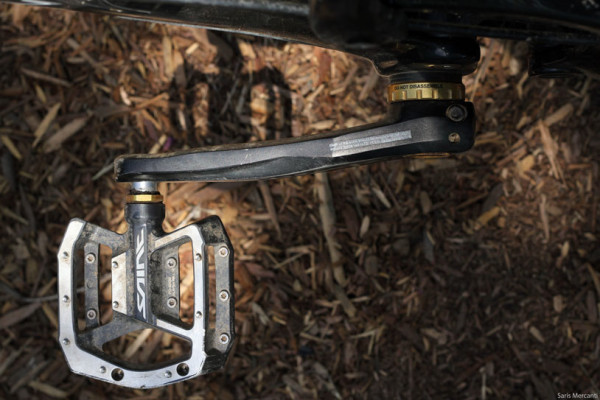
Out of the packaging and onto the bike, it quickly became apparent that the Saint Pedals lacked the tenacious grip we were accustomed to from other high end pedals. So after spending one ride too many without being able to keep our feet in place, we set about removing the washers that come preinstalled under each of the pin heads. This brought the traction levels up to a respectable levels, and made a tremendous difference through rough terrain.
While most competitors are fighting an arms race to produce the thinnest pedals possible, the Saints are only 8.5mm thinner than the venerable (but chunky) DX pedals, but we suffered no ill side effects as a result. We did endure our fair share of pedal strikes, but that’s inevitable when riding rocky or technical trails.
The two tone color scheme has also held up well to the abuse, with the silver surfaces being less susceptible to wear than other anodized platforms. In addition to holding up well visually, we can’t really remember the last time we had to rebuild a pair of Shimano pedals. In more than a year of shuttles and park laps, the Saint pedals have not developed any slop, and are still spinning smoothly.
If you’re looking for the most reliable flats pedal on the market, the Shimano Saints might just earn that title. They’re not the lightest, or the thinnest, but they are extremely low maintenance, and offer decent grip. You could certainly do a lot worse for $100.
